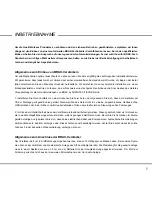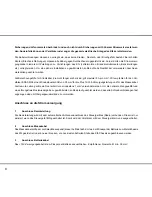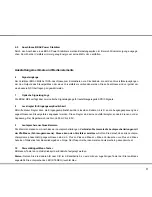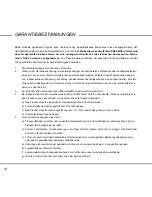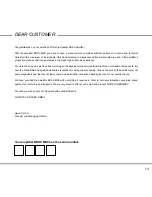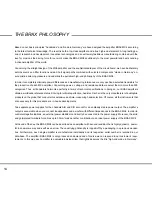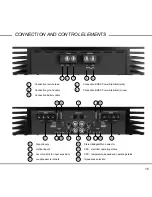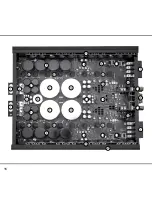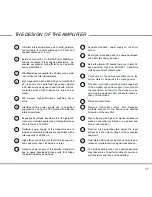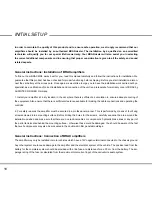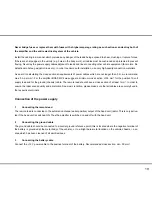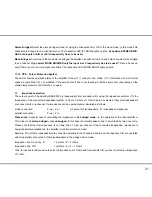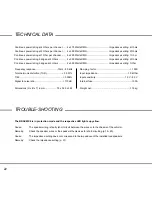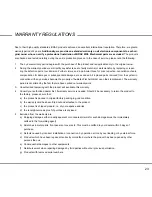
21
Stereo Bridged:
Select the stereo bridged mode for using the channels A/B or C/D in the mono mode. In this mode both
channels are bridged to one channel (mono). The respective LED (ST.BRGD) lights up blue.
At position STEREO BRID-
GED both inputs of A/B or of C/D respectively have to be used.
Mono Bridged:
According to the mode stereo bridged the amplifier is switched to mono and both channels will be bridged
to one channel.
If you select MONO BRIDGED only the input A or C respectively has to be used.
This can be neces-
sary if there is only one mono signal available. The respective LED (MONO BRGD) lights up blue.
11-12 CPS - Colour Protection System
The LEDs show the operation status of the amplifier. Green (11) = ready for use; Yellow (11) = malfunction: short-circuit at
speaker output; Red (12) = overheated: If the amp shuts off due to overheating it will take some time (depending on the
outside temperature) until it switches on again.
13
Impedance selection
The output power of the amplifier BRAX MX4 is independent from impedance. By using the impedance selector (13) the
impedance of the connected loudspeaker system (4 Ohms, 2 Ohms or 1 Ohm) has to be selected. If several loudspeakers
are connected to one channel, the impedance can be approximately calculated as follows:
series connection:
Z
tota
l
= Z x n
(n= amount of loudspeakers; Z= loudspeaker impedance)
parallel connection:
Z
tota
l
= Z / n
Please note
: A special case of calculating the impedance is the
bridged mode
, i.e. the operation of the channels A/B or
C/D in the mode
stereo bridged
or
mono bridged.
In this case the total impedance has to be divided by two once more.
Please note that the total impedance is not lower than 1 Ohm per channel. If the connected loudspeaker impedance is
below the selected impedance, the amplifier turns into protection mode.
Example: Two 4 Ohms loudspeakers are connected parallely to the channels A and B and the channels C/D are operated
with two parallely connected 4 Ohms loudspeakers in the bridged mono mode.
Impedance Lsp. A and Lsp. B
= 4 Ohms / 2 = 2 Ohms
Impedance Lsp. C/D
= (4Ohms / 2) / 2 = 1 Ohms
Thus, for channels A/B you have to select an impedance of 2 Ohms and for channels C/D you have to select an impedance
of 1 Ohm.

